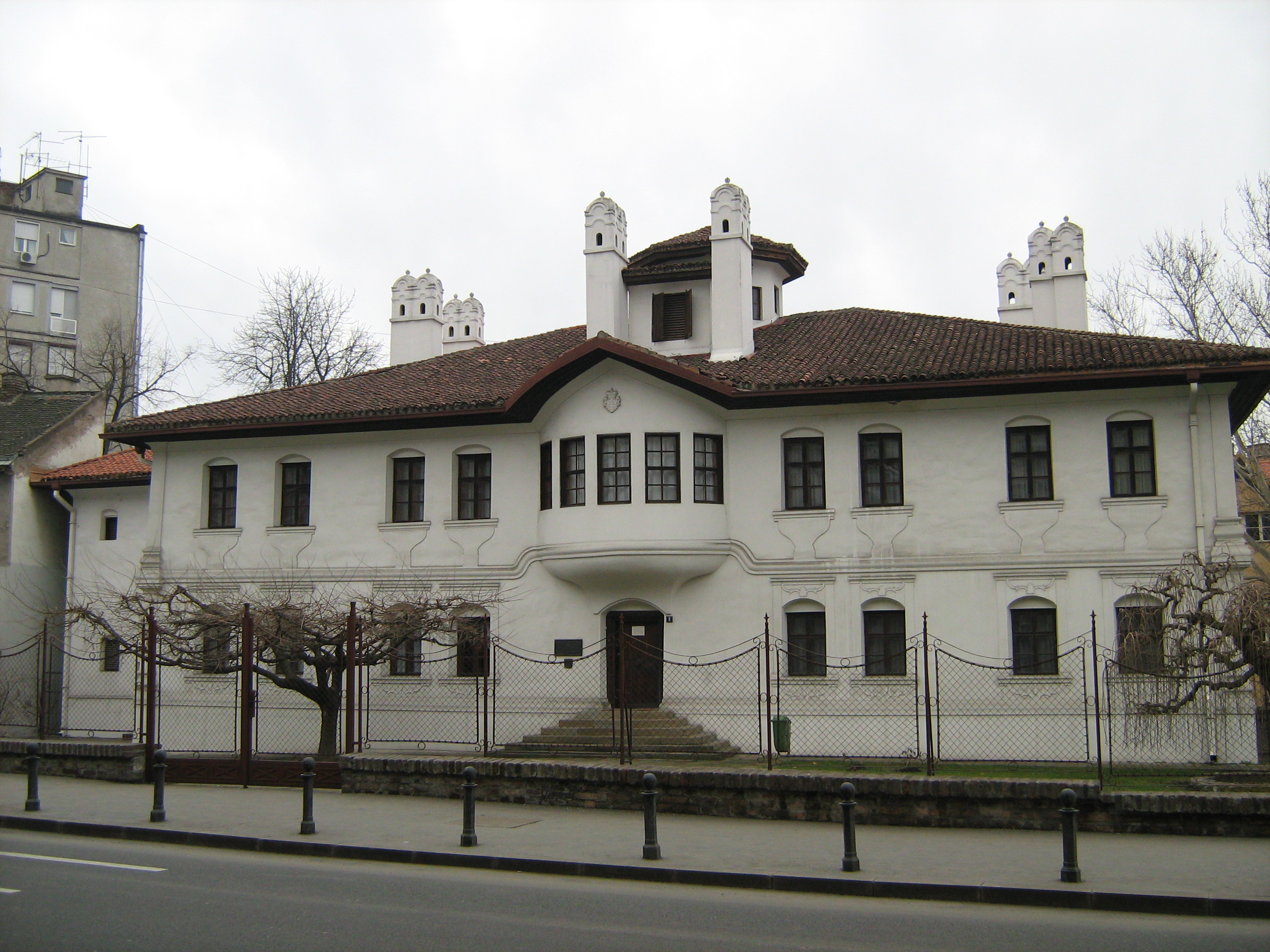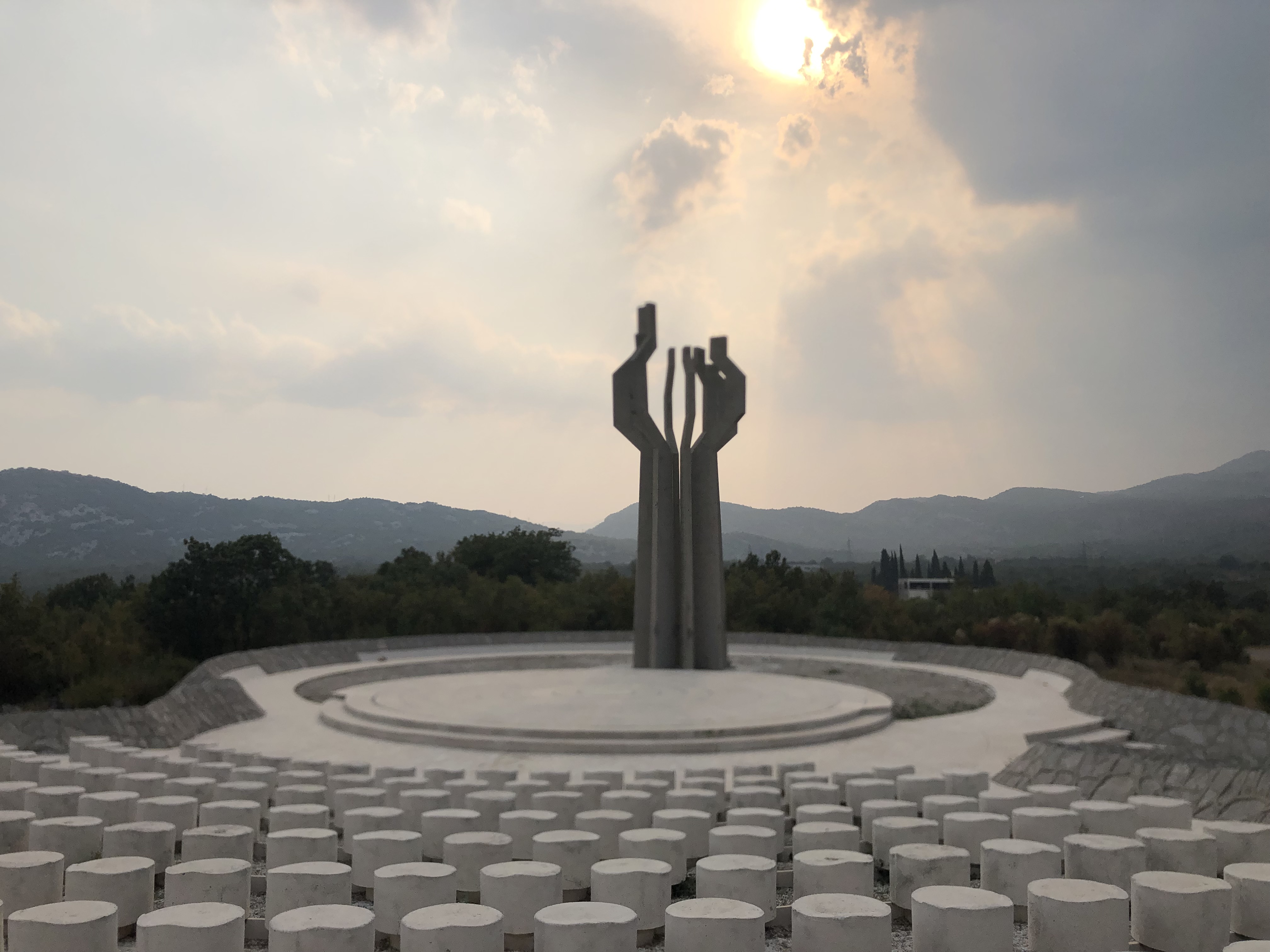|
Čačalica
Čačalica ( sr-Cyrl, Чачалица) is a 208m high hill above Požarevac, which contains a memorial park with same name, Memorial Park Čačalica (Спомен парк Чачалица), that was built in 1962 and includes 28 hectares. The authors of the monuments inside the park are architects Branislav Stojanović and sculptor S. Mišić. The memorial complex is built on a place where during World War II over 3,000 Yugoslav Partisans and their supporters were executed. There is a symbolic monument wall with bullet holes in the place where remains of those killed were buried. There is also a monument dedicated to soldiers of the Red Army The Workers' and Peasants' Red Army, often shortened to the Red Army, was the army and air force of the Russian Soviet Republic and, from 1922, the Soviet Union. The army was established in January 1918 by a decree of the Council of People ... who died during the fight to liberate Požarevac. On top of the hill there is monument cal ... [...More Info...] [...Related Items...] OR: [Wikipedia] [Google] [Baidu] |
Požarevac
Požarevac ( sr-cyr, Пожаревац, ) is a list of cities in Serbia, city and the administrative centre of the Braničevo District in eastern Serbia. It is located between three rivers: Danube, Great Morava and Mlava and below the hill Čačalica (208m). As of 2022, the city has a population of 42,530 while the city administrative area has 68,648 inhabitants. Name In Serbian language, Serbian, the city is known as ''Požarevac'' (Пожаревац), in Romanian language, Romanian as ''Pojarevăț'' or ''Podu Lung'', in Turkish language, Turkish as ''Pasarofça'', in German language, German as ''Passarowitz'', and in Hungarian language, Hungarian as ''Pozsarevác''. The name means "Conflagration, fire-town" in Serbian language, Serbian (In this case, the word "fire" is used in the sense of a disaster). History Ancient times In ancient times, the area was inhabited by Thracians, Dacians, and Celts. There was a city at this locality known as ''Margus (city), Margus'' in Lati ... [...More Info...] [...Related Items...] OR: [Wikipedia] [Google] [Baidu] |
Historic Landmarks Of Great Importance
Immovable Cultural Heritage of Great Importance ( / ''Nepokretna kulturna dobra od velikog značaja'') are those objects of Immovable cultural heritage that enjoy the second-highest level of state protection in the Republic of Serbia, behind the Immovable Cultural Heritage of Exceptional Importance. Immovable Cultural Heritage is classified as being of Great Importance upon decision by the National Assembly of Serbia. They are inscribed in the ''Central Register of Immovable cultural property'' maintained by the Institute for the Protection of Cultural Monuments of Serbia. Objects of Immovable cultural heritage have to fulfill one or more of those criteria defined in the ''Law on Cultural Heritage'' of 1994 in order to be categorized as being "of great importance": # importance for a certain area or time-span; # evidence of social or natural development, or the socio-economic and cultural-historic development conditions during a certain time-span; #evidence about important historic ... [...More Info...] [...Related Items...] OR: [Wikipedia] [Google] [Baidu] |
Monument Of Culture Of Great Importance (Serbia)
Immovable Cultural Heritage of Exceptional Importance (/) are those objects of Immovable Cultural Heritage of Serbia, cultural heritage that enjoy the highest level of state protection in the Republic of Serbia. Immovable Cultural Heritage is classified as being of Exceptional Importance upon decision by the National Assembly of Serbia. They are inscribed in the ''Central Register of Immovable cultural property'' maintained by the . Objects of Immovable cultural heritage have to fulfill one or more of those criteria defined in the ''Law on Cultural Heritage'' of 1994 in order to be categorized as being "of exceptional importance": # exceptional importance for social, historical or cultural development of the people, or for the development of its natural environment; # evidence of important historic events or persons and their work; # unique (rare) example of human creativity of the time or a unique example from the natural history; # great influence on the development of society, cul ... [...More Info...] [...Related Items...] OR: [Wikipedia] [Google] [Baidu] |
World War II
World War II or the Second World War (1 September 1939 – 2 September 1945) was a World war, global conflict between two coalitions: the Allies of World War II, Allies and the Axis powers. World War II by country, Nearly all of the world's countries participated, with many nations mobilising all resources in pursuit of total war. Tanks in World War II, Tanks and Air warfare of World War II, aircraft played major roles, enabling the strategic bombing of cities and delivery of the Atomic bombings of Hiroshima and Nagasaki, first and only nuclear weapons ever used in war. World War II is the List of wars by death toll, deadliest conflict in history, causing World War II casualties, the death of 70 to 85 million people, more than half of whom were civilians. Millions died in genocides, including the Holocaust, and by massacres, starvation, and disease. After the Allied victory, Allied-occupied Germany, Germany, Allied-occupied Austria, Austria, Occupation of Japan, Japan, a ... [...More Info...] [...Related Items...] OR: [Wikipedia] [Google] [Baidu] |
Yugoslav Partisans
The Yugoslav Partisans,Serbo-Croatian, Macedonian language, Macedonian, and Slovene language, Slovene: , officially the National Liberation Army and Partisan Detachments of Yugoslavia sh-Latn-Cyrl, Narodnooslobodilačka vojska i partizanski odredi Jugoslavije (NOV i POJ), Народноослободилачка војска и партизански одреди Југославије (НОВ и ПОЈ); ; (often shortened as the National Liberation Army sh-Latn-Cyrl, Narodnooslobodilačka vojska (NOV), Народноослободилачка војска (НОВ); ; ) was the Communist Party of Yugoslavia, communist-led Anti-fascism, anti-fascist resistance to the Axis powers (chiefly Nazi Germany) in occupied Yugoslavia during World War II. Led by Josip Broz Tito, the Partisans are considered to be Europe's most effective anti-Axis powers, Axis Resistance during World War II, resistance movement during World War II. Primarily a Guerrilla warfare, guerrilla force at its ince ... [...More Info...] [...Related Items...] OR: [Wikipedia] [Google] [Baidu] |
Red Army
The Workers' and Peasants' Red Army, often shortened to the Red Army, was the army and air force of the Russian Soviet Republic and, from 1922, the Soviet Union. The army was established in January 1918 by a decree of the Council of People's Commissars to oppose the military forces of the new nation's adversaries during the Russian Civil War, especially the various groups collectively known as the White Army. In February 1946, the Red Army (which embodied the main component of the Soviet Armed Forces alongside the Soviet Navy) was renamed the "Soviet Army". Following the dissolution of the Soviet Union it was split between the post-Soviet states, with its bulk becoming the Russian Ground Forces, commonly considered to be the successor of the Soviet Army. The Red Army provided the largest land warfare, ground force in the Allies of World War II, Allied victory in the European theatre of World War II, and its Soviet invasion of Manchuria, invasion of Manchuria assisted the un ... [...More Info...] [...Related Items...] OR: [Wikipedia] [Google] [Baidu] |
Yugoslav World War II Monuments And Memorials
The authorities of the Socialist Federal Republic of Yugoslavia established many World War II memorials during the country's existence. Several memorial sites were established between 1945 and 1960, though widespread building started after the founding of the Non-Aligned Movement. Yugoslav president Josip Broz Tito commissioned several memorial sites and monuments in the 1960s and 1970s dedicated to World War II battles, and Nazi concentration camps, Nazi concentration camp sites. They were designed by notable sculptors, including Dušan Džamonja, Vojin Bakić, Miodrag Živković (sculptor), Miodrag Živković, Jordan and Iskra Grabul, and architects, including Bogdan Bogdanović (architect), Bogdan Bogdanović, Svetlana Kana Radević and Gradimir Medaković. After Tito's death, a small number were built, and the monuments were popular visitor attractions in the 1980s as patriotic sites, and since the Yugoslav Wars and the Breakup of Yugoslavia, dissolution of Yugoslavia, the site ... [...More Info...] [...Related Items...] OR: [Wikipedia] [Google] [Baidu] |





